SINGLE/THREE PHASES RECTIFICATION BRIDGE MODULES
| Features | Typical Application | PDDN-Notes |
|
|
|
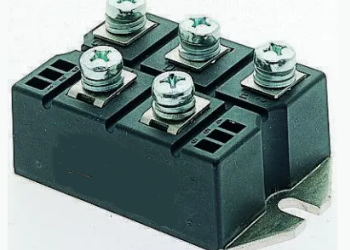
MDQ
| Type | I0 [A] | VRRM [V] | IRRM [mA] | IF[AV] [A] | VF[RMS] [A] | ITSM [kA] | Datasheet | Offer |
|---|---|---|---|---|---|---|---|---|
| PDDN-MDQ50 | 50 | 600-1600 | 4 | 25 | 60 | 1 | Request | |
| PDDN-MDQ75 | 75 | 600-1600 | 8 | 38 | 70 | 1.2 | Request | |
| PDDN-MDQ100 | 100 | 600-1600 | 10 | 50 | 86 | 1.5 | Request | |
| PDDN-MDQ150 | 150 | 600-1600 | 15 | 75 | 106 | 2.1 | Request |
MDS
| Type | I0 [A] | VRRM [V] | IRRM [mA] | IF[AV] [A] | VF[RMS] [A] | ITSM [kA] | Datasheet | Offer |
|---|---|---|---|---|---|---|---|---|
| PDDN-MDS30 | 30 | 600-1600 | 2 | 10 | 25 | 0.5 | Request | |
| PDDN-MDS50 | 50 | 600-1600 | 4 | 17 | 39 | 0.75 | Request | |
| PDDN-MDS75 | 75 | 600-1600 | 4 | 25 | 47 | 1 | Request | |
| PDDN-MDS100 | 100 | 600-1600 | 8 | 33 | 51 | 1.2 | Request | |
| PDDN-MDS150 | 150 | 600-1600 | 10 | 50 | 71 | 1.5 | Request | |
| PDDN-MDS175 | 175 | 600-1600 | 12 | 58 | 83 | 2.7 | Request | |
| PDDN-MDS200 | 200 | 600-1600 | 15 | 67 | 95 | 2.1 | Request |
Overview of Single Phase/Three-Phase Rectifier Bridge Module
Single-phase and three-phase rectifier bridge modules are key components in power electronics that convert alternating current (AC) to direct current (DC). The single-phase bridge rectifier converts single-phase alternating current to continuous current by allowing current to flow in one direction through a bridge configuration of diodes. On the other hand, the three-phase bridge rectifier achieves the same conversion but for three-phase AC, offering higher power output and smoother DC waveforms. Both modules are crucial in various applications, including power supplies, motors, and battery charging systems.
Characteristics of Single Phase/Three-Phase Rectifier Bridge Module:
1. Rectification function: Whether a single-phase or three-phase rectifier bridge, its basic function is converting AC power into DC power.
2. Wide application areas: The rectifier bridge module has been widely used in multiple fields, such as power electronics, communication, and automation control.
3. Reliability: After reasonable design and manufacturing, rectifier bridge modules usually have high reliability and can operate stably long.
Application of single-phase rectifier bridge module:
1. Household appliances: Single-phase rectifier bridge modules are widely used in domestic appliances, such as air conditioners, washing machines, refrigerators, etc. They must convert AC power into DC power to drive motors or other internal circuits.
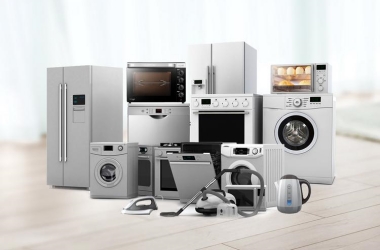
(Single phase rectifier bridge module for household appliances)
2. LED lighting: LED lighting fixtures require a stable DC power supply to provide constant light output, so single-phase rectifier bridge modules play an important role in LED lighting systems.
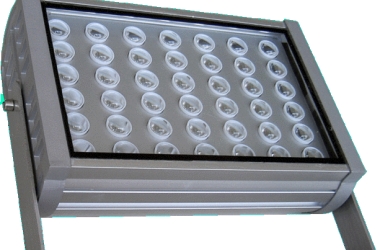
(Single phase rectifier bridge module for LED lighting)
3. Electric vehicle charger: The single-phase rectifier bridge module is also commonly used in electric vehicle chargers to convert alternating current into direct current suitable for battery charging.
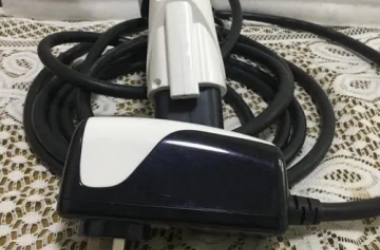
(Single phase rectifier bridge module for electric vehicle chargers)
Application of three-phase rectifier bridge module:
1. Industrial motor drive: The three-phase rectifier bridge module is an important component of the industrial motor drive system, which can convert three-phase AC power into DC power, providing stable power for the motor.
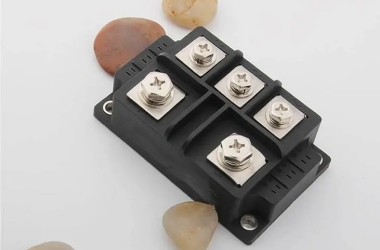
(Three phase rectifier bridge module )
2. Power Transformer: In the power system, the three-phase rectifier bridge module is commonly used on the secondary side of the power transformer to convert AC power into DC power for subsequent equipment use.
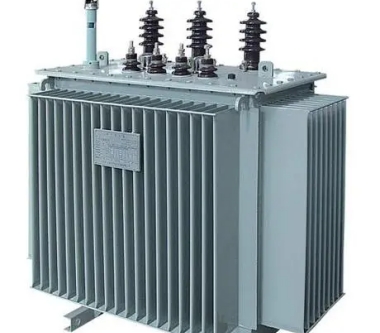
(Three phase rectifier bridge module for power transformers)
3. Wind and solar power generation systems: In the field of renewable energy, three-phase rectifier bridge modules are used to convert the AC power generated by wind turbines and solar cell plates into DC power for storage or integration into the grid.

(Three phase rectifier bridge module for wind turbines)
4. High-power electronic devices: For devices requiring high-power input, such as large lasers, radar systems, etc., three-phase rectifier bridge modules can provide the required stable DC power supply.

Company Profile
PDDN Photoelectron Technology Co., Ltd.(sales@pddn.com) is a high-tech enterprise focusing on the manufacturing, R&D, and sales of power semiconductor devices. Since its establishment, the company has been committed to providing high-quality, high-performance semiconductor products to customers worldwide to meet the needs of the evolving power electronics industry.
It accepts payment via Credit Card, T/T, West Union, and Paypal. PDDN will ship the goods to clients overseas through FedEx and DHL, by sea, or by air. Please inquire if you want a high-quality Single Phase/Three-Phase Rectifier Bridge Module; we will help.
Payment Methods of Single Phase/Three-Phase Rectifier Bridge Module
L/C, T/T, Western Union, Paypal, Credit Card etc.
Shipment of Single Phase/Three-Phase Rectifier Bridge Module
By sea, by air, by express, as customers request.
Storage Conditions for the Single Phase/Three-Phase Rectifier Bridge Module
1. Temperature: The rectifier bridge module should be stored in a dry and moderate temperature environment. Excessive temperature may cause damage or performance degradation to electronic components inside the module, while low temperature may cause condensation inside the module, resulting in short circuits or other damage. The recommended storage temperature is usually between -40 ° C and+85 ° C.
2. Humidity: High humidity environments may cause electronic components inside the module to become damp or corroded. Therefore, the storage environment should maintain a low humidity, with a recommended relative humidity of 5% to 95% (without condensation).
3. Cleanliness: Dust, dirt, or other pollutants should be avoided in the storage environment. These pollutants may enter the interior of the module and affect its performance. Therefore, storing the module in a clean and dust-free environment is recommended.
4. Static electricity protection: The rectifier bridge module is an electrostatic sensitive equipment, so static electricity protection measures should be taken during storage and handling, such as wearing anti-static wristbands, using anti-static packaging, etc.
5. Mechanical shock and vibration: Excessive mechanical shock and vibration should be avoided on the module. This may cause loose connections within the module or damage to electronic components.
6. Packaging and labeling: Modules should be stored appropriately to prevent physical damage. At the same time, it should be ensured that the identification of the modules is clear and complete for easy identification and traceability.
FAQ
Q1
What are the main differences in circuit design and application between single-phase rectifier bridge modules and three-phase rectifier bridge modules?
Re:The main differences between single-phase rectifier bridge modules and three-phase rectifier bridge modules in circuit design and application are reflected in the input power supply and processing capacity. The single-phase rectifier bridge module handles AC power and is suitable for low-power applications. Its circuit design is relatively simple. The three-phase rectifier bridge module can handle three-phase AC power and is suitable for high-power applications. Its circuit design is more complex but can provide more stable and efficient DC output.
Q2
What key elements should be regarded when selecting single-phase or three-phase rectifier bridge modules?
Re:When selecting single-phase or three-phase rectifier bridge modules, key factors include the required DC output power, the number of phases in the input power supply, system efficiency requirements, cost budget, and space limitations. High-power applications typically require three-phase rectifier bridge modules, while low-power applications can choose single-phase rectifier bridge modules. In addition, heat dissipation performance, reliability, and cost are also important factors that need to be comprehensively considered in the selection process.
Q3
What are the best practices for the heat dissipation design of rectifier bridge modules?
Re:The heat dissipation design of the rectifier bridge module is the key to ensuring its stable operation. Best practices include using large-area heat sinks, optimizing the internal layout of modules to improve heat dissipation efficiency, selecting appropriate thermal conductive materials, and ensuring good contact between modules and cooling systems. In addition, heat dissipation can be enhanced by reducing ambient temperature, reducing thermal resistance, and increasing cooling fans.
Q4
How do selecting different materials and technologies (such as silicon rectifiers, Schottky rectifiers, etc.) affect the overall performance in single-phase and three-phase rectifier bridge modules?
Re:In single-phase and three-phase rectifier bridge modules, the selection of different materials and technologies directly affects the overall performance. For example, silicon rectifiers have high voltage and temperature resistance, making them suitable for high-power applications. On the other hand, the Schottky rectifier has lower forward voltage drop and fast recovery characteristics, making it suitable for high efficiency and low-loss applications. Therefore, when selecting rectifier bridge modules, it is necessary to choose appropriate materials and technologies based on specific application requirements to optimize overall performance.
Q5
What common errors or improper operations must be avoided when using single-phase or three-phase rectifier bridge modules?
Re:Common errors or improper operations when using single-phase or three-phase rectifier bridge modules include high or low input voltage, exceeding the power processing capacity of the module, neglecting heat dissipation design, leading to overheating, and causing short circuits or damage during installation and connection. To avoid these issues, it is important to guarantee that the input voltage is within the rated range of the module, select the appropriate module to meet power requirements, prioritize heat dissipation design, and follow installation and connection guidelines. In addition, regular monitoring and service of the rectifier bridge module should be carried out to ensure its long-term stable operation.
Opening Time
- Sunday – Friday: 09:00am – 10:30pm
- Saturday: 10:00am – 02:00pm
Contact Info.
- Email: sales@pddn.com
- Mobile: +86 18837951818
Contact Address
- Tongrun photoelectron, 3rd Floor, Nanshan Science Park, Nanshan District, Shenzhen, Guangdong, China
